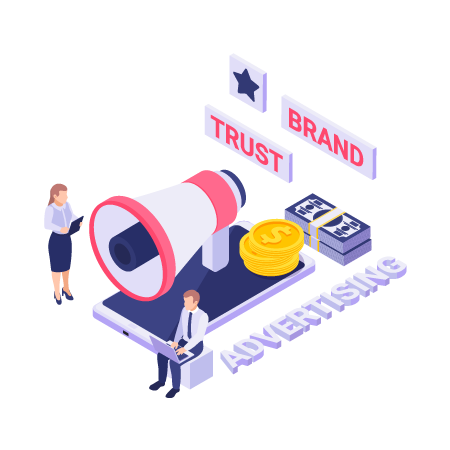- August 22, 2022
What is Brand Recall?
5 minutes to read

Out of sight, out of mind; this phrase holds true in the case of marketing brands. Being a customer’s first choice is the result of, on point communication strategy coupled with quality products. If the need arises for a service you offer and the customer thinks of your brand first, that indicates the solid brand impression you have created that lingers in their mind.
Positive brand exposure is a prerequisite for improving brand recall. A recent Macquarie University study has shown this to be the case for durable goods. It is worth understanding that the survey also revealed that advertising had more influence on brand recall than a mere personal experience.
Brand recall allows you to stay on top of the game because you are being chosen time and again over your competitors. Companies want their brand to have the edge over their competitors to increase brand exposure. The first brand name, which is recalled often known as “top of mind,” is advantageous in the brand space, as it has the first chance to evaluate the consumer’s purchase.
If a company has a high brand recall, then there are more chances that while buying their brand offering, the customer will remember it more often and would end up buying more of the brand.
Given that this cycle continues, repeat purchases would be considerably high. We can define Brand recall as a part of brand awareness, which along with parameters like brand recognition and top-of-the-mind brand, help a brand establish itself in the minds of the consumer.
Notably, brand recognition and brand recall are pretty different. “Recognition” is a process that involves making connections.
For instance, you might hear “Finger lickin’ good!” and think of the KFC brand. On the other hand, “recall” is a more profound cognitive state. It means people understand the nuances of what your brand represents and what it is about and its key differentiating factors. For instance, thinking of ordering hygienically prepared non-vegetarian food, a customer may recall his great experience at a KFC restaurant.
Let’s also discuss brand recall vs brand awareness, the former is a part of the latter. Whereas, the latter includes brand recall marketing, brand recognition, brand dominance and so on.
Generally speaking, there are two significant types of brand recall:
Aided brand recall
Here, you put in the effort or give hints to the customer so they can recall your products and services and ultimately choose you. You may send them emails or text messages about the points they may have earned shopping at your brick-and-mortar store or website. Another example could be what Zomato does, enticing customers with humorous pop-up notifications.
Unaided brand recall
Other times, a brand may not initiate communication or give any cues. For instance, a user suggests their friend your broadband services, or you purchase a bottle of water and ask the shopkeeper for Bisleri or buy washing powder and say Surf instead. The customer already had your brand in mind.
Innumerable strategies may prove effective for brand recall. A great strategy for brand recall generally comprises the below:
Shares are imperative for reaching new audiences in the online world. People beyond your follower base see your content and build organic reach. The human brain processes visuals 60,000 times faster than plain text, allowing your infographic to get more engagement. By creating infographics that can be shared, the viewer can quickly retain the information and spread the word with much ease.
Getting started with search engine optimization (SEO) seems like a daunting task, but it’s simple to implement — and vital to enhancing your presence online. It facilitates your content to be seen by users on search engines like Google and placed higher on search results pages.
Build content around these keywords–Say you’re a jeweler, and you find that many people are searching for ‘bracelets.’ You could create a post titled, ‘5 Bracelets that are a must-have.
Emotions, ideas, and needs drive people, and these factors guide them to purchase your product or service. By narrating a compelling story about the company’s history and philosophy, you can create a positive relationship between your brand and the ideals your target audience holds dear. You will much more easily be able to build that emotional connection with your audience.
Through brand recall, your audience remembers you. An easy way to ensure that they keep coming is by creating a logo and a tagline, both of which are unique and are imprinted in their minds. Libresse, just by adding the brand logo on their advertisements, saw a 300% increase brand recall. If that is not reason enough to focus on a unique logo and tagline, we do not know what is.
There are advertisements and even brand mascots that invoke many feelings, and we are sure everyone has experienced this. Some great examples of an effective brand recall are:
We understand the crucial part that brand recall plays in creating resilient businesses. Every brand should focus on consistent messaging and consistent quality brand design across platforms. At Granth, we employ the vast knowledge of our branding team and some exciting tools to maximize your potential.
If you are interested to know how we can give your brand some respite in this ever-increasing clutter in your industry, let’s connect!